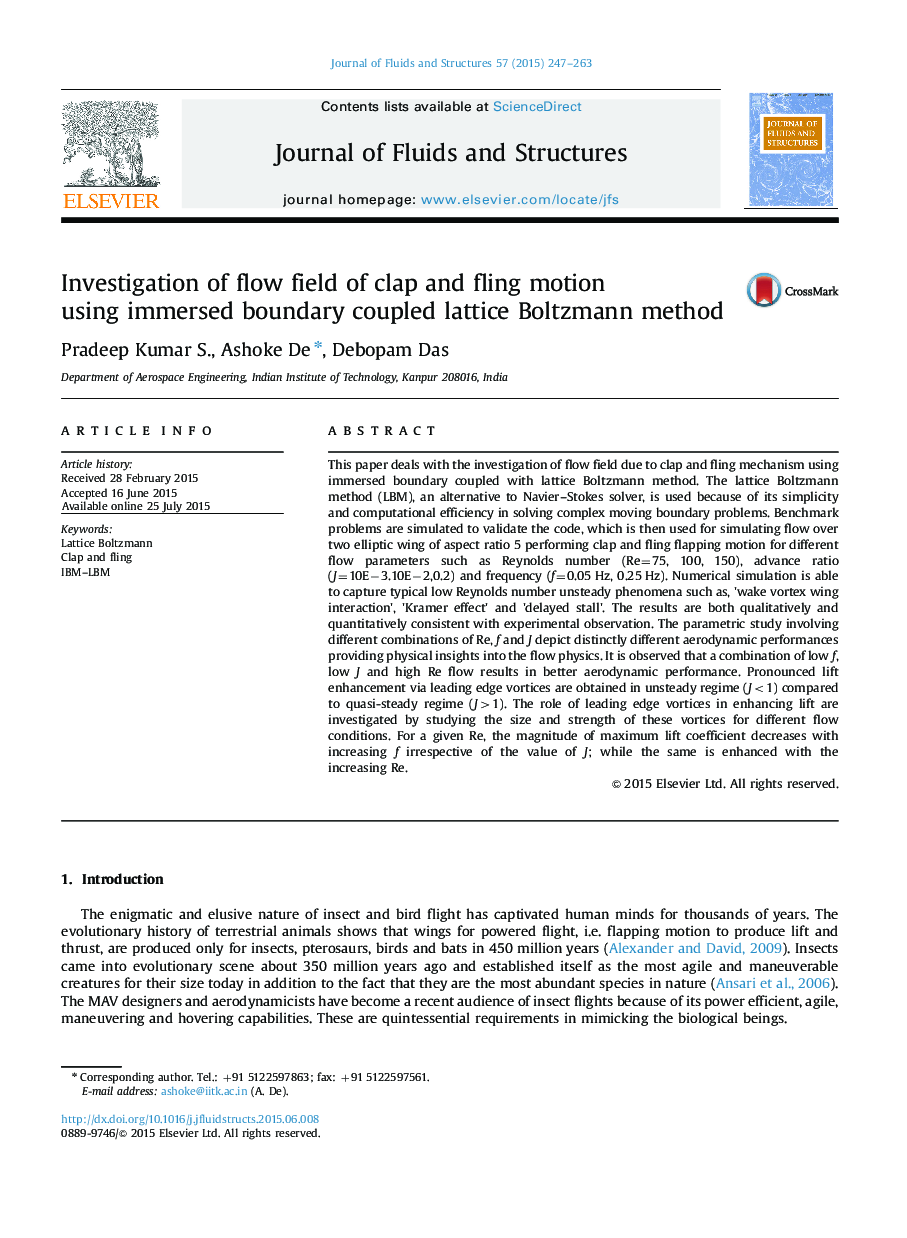| Article ID | Journal | Published Year | Pages | File Type |
|---|---|---|---|---|
| 792613 | Journal of Fluids and Structures | 2015 | 17 Pages |
highlights•Immersed boundary coupled LBM simulation.•Clap and fling simulation.•Low Re unsteady effects are investigated.
This paper deals with the investigation of flow field due to clap and fling mechanism using immersed boundary coupled with lattice Boltzmann method. The lattice Boltzmann method (LBM), an alternative to Navier–Stokes solver, is used because of its simplicity and computational efficiency in solving complex moving boundary problems. Benchmark problems are simulated to validate the code, which is then used for simulating flow over two elliptic wing of aspect ratio 5 performing clap and fling flapping motion for different flow parameters such as Reynolds number (Re=75, 100, 150), advance ratio (J=10E−3.10E−2,0.2) and frequency (f=0.05 Hz, 0.25 Hz). Numerical simulation is able to capture typical low Reynolds number unsteady phenomena such as, ׳wake vortex wing interaction׳, ׳Kramer effect׳ and ׳delayed stall׳. The results are both qualitatively and quantitatively consistent with experimental observation. The parametric study involving different combinations of Re, f and J depict distinctly different aerodynamic performances providing physical insights into the flow physics. It is observed that a combination of low f, low J and high Re flow results in better aerodynamic performance. Pronounced lift enhancement via leading edge vortices are obtained in unsteady regime (J<1) compared to quasi-steady regime (J>1). The role of leading edge vortices in enhancing lift are investigated by studying the size and strength of these vortices for different flow conditions. For a given Re, the magnitude of maximum lift coefficient decreases with increasing f irrespective of the value of J; while the same is enhanced with the increasing Re.
